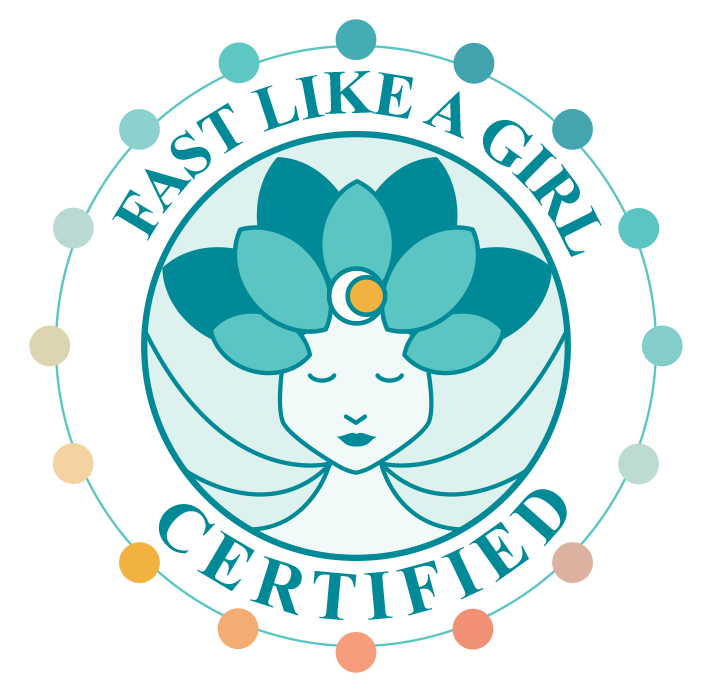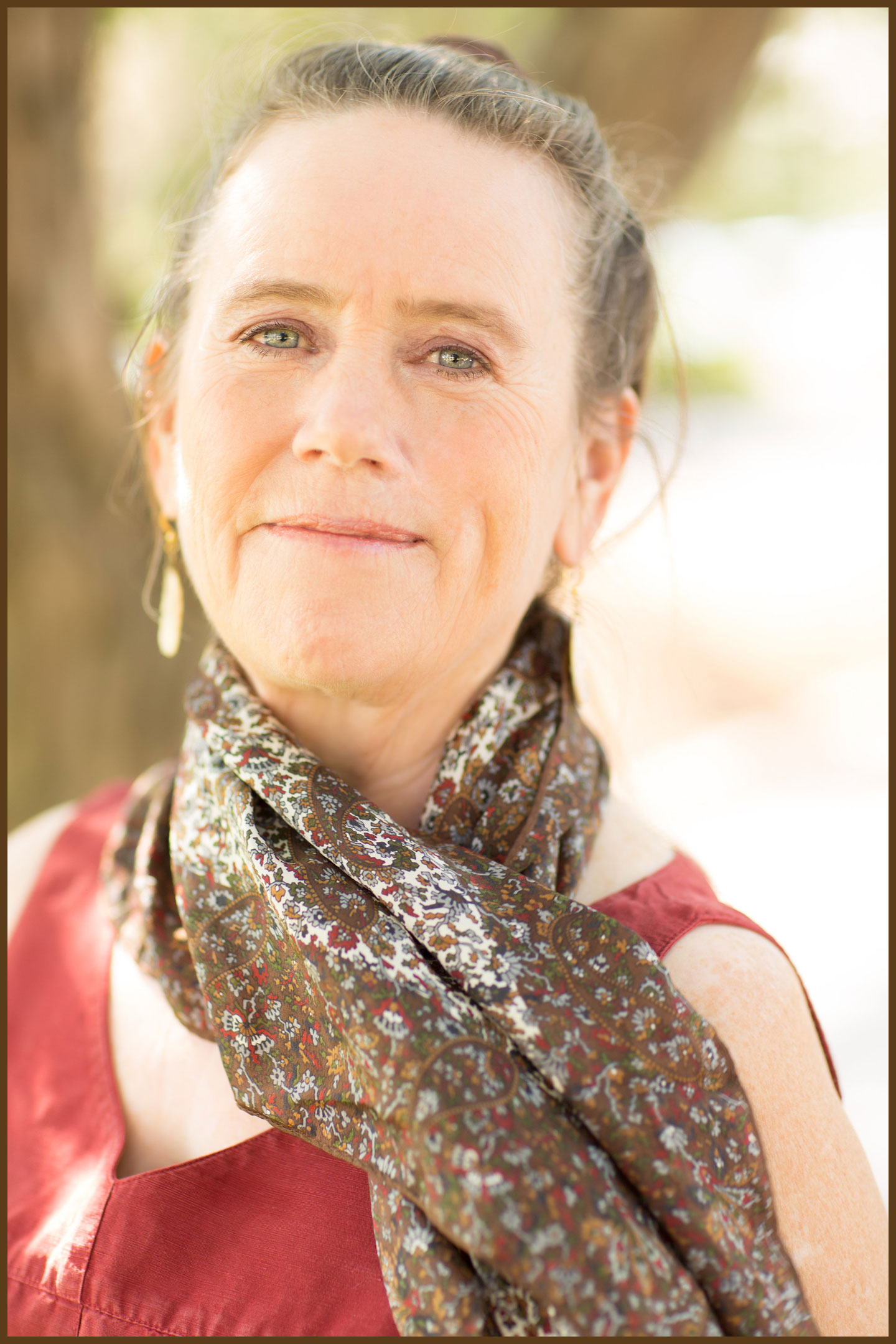Ebola in the News
It has come around again. Curiously, I wrote a paper on the Ebola Virus and researched Naturopathic treatment for it for a Microbiology class at Southwest College of Naturopathic Medicine early in 1996.
The Hot Zone
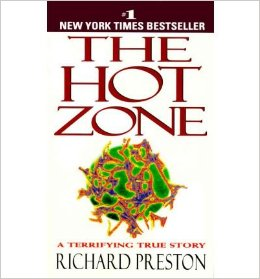 In 1994, Richard Preston wrote a book called The Hot Zone which is a thriller based on the true story of hemorrhagic fevers like Ebola. It became a Bestseller and went to Mass Market Paperback publication.
In 1994, Richard Preston wrote a book called The Hot Zone which is a thriller based on the true story of hemorrhagic fevers like Ebola. It became a Bestseller and went to Mass Market Paperback publication.
It is written as if you were in the shoes of the nurse or African visitor that suddenly finds himself with uncomfortable symptoms and rapid deterioration. Preston describes in great detail the progression of the disease, from the initial headache and backache, to the final stage in which the internal organs fail and the patient “bleeds out.” That is enough to scare anyone.
In the meantime, we have been scared by SARS, anthrax and possible bioterrorism. Now Ebola has crossed the ocean. It is time to empower ourselves with education and not indulge in fear-mongering.
When it gets real
 On August 8, 2014, the World Health Organization declared an international public health state of emergency because of the West African outbreak of Ebola hemorrhagic fever.
On August 8, 2014, the World Health Organization declared an international public health state of emergency because of the West African outbreak of Ebola hemorrhagic fever.
While modern medicine is doing a heroic job of containment with haz-mat suits, quarantines and education of the public, they let the patient’s immune system battle it out with the virus. Then they scramble to concoct vaccines and antiviral treatments.
Naturopathic Medicine
Naturopathic medicine can enhance treatment by actually supporting the immune system in the battle with the virus. The Naturopathic principle of “find and treat the cause” hinges on the philosophy that it takes two to get sick: the virulent pathogen and an imbalanced environment of the host. Naturopathic medicine works with maximizing the health of the host and minimizing exposure to it. After all, Ebola is hard to catch, you must have mucous membrane contact with a liquid from an infected individual. And once infected, a person has up to a 50/50 chance of surviving. That says a lot for the human immune system.
Fever
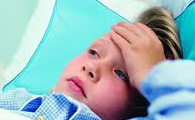 Naturopathic treatment emphasizes leaving a fever alone because it the body’s thermal response to infecting organisms. Immune responses are stimulated, muscles are broken down for their amino acids, and gut motility is deceased when the body temperature is elevated. Therefore rest and fasting and maintaining hydration with special attention to electrolytes is called for, especially if there is diarrhea and vomiting.
Naturopathic treatment emphasizes leaving a fever alone because it the body’s thermal response to infecting organisms. Immune responses are stimulated, muscles are broken down for their amino acids, and gut motility is deceased when the body temperature is elevated. Therefore rest and fasting and maintaining hydration with special attention to electrolytes is called for, especially if there is diarrhea and vomiting.
Homeopathic Remedies
Homeopathy is within the scope of practice of Naturopathic Physicians. Prescribing with homeopathic remedies may be done solely on symptoms. This allows a person to be treated in the very beginning stages of the disease, thereby reducing the bodily destruction and improving the chances of complete recovery. There is also a history of using a fitting remedy to prevent infection during a viral epidemic outbreak.
In addition, there are Naturopathic ways to fortify the immune system, including with herbal medicine, nutritional support, mind/body modalities, acupuncture, manual therapies, and many more. I will focus on homeopathy here. The following is what I researched and wrote in my paper.
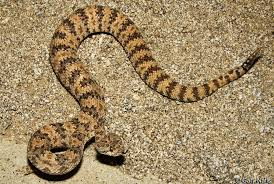 The symptoms of Ebola match closely the symptom picture of the Homeopathic remedy Crotalus Horridus. Other remedies with symptoms in common are Phosphorus, Lachesis, Bothrops, and Mercury Corrosivus. in that order.
The symptoms of Ebola match closely the symptom picture of the Homeopathic remedy Crotalus Horridus. Other remedies with symptoms in common are Phosphorus, Lachesis, Bothrops, and Mercury Corrosivus. in that order.
This brief listing shows how close Crotalus Horridus is to the clinical presentation of Ebola:
Mentals:
- Delirium with cycles of weeping, agony, despair, and irritation.
- Irritability and greatly emotional predominantly with sadness and weeping.
- Melancholic and sluggish, perception and memory clouded.
- May be very talkative and wish to escape.
Physicals:
- Widespread bleeding, from any orifice even tears or sweat.
- Bleeding tendency with dark but unclotted blood.
- Sepsis often with generalized hemorrhage.
- Collapsed state, broken down constitution.
- Jaundice. Skin cold and dry.
- Yellow skin, face leaden-colored without any emotion or expression.
- Tongue red, smooth and polished, lips swollen and numb.
- Eyes very sensitive to light.
- Vomiting dark, green, or black or like coffee grounds.
- Diarrhea with stools thin and black.
- Fever with heat flushes over all the body, sweaty then chilled/cold.
- Convulsions.
Modalities:
- worse right side, evening and morning, damp and wet
- better rest
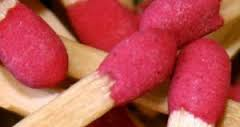 Phosphorus is mentally very irritated, negative dwelling, with burnout. She has a fear of things creeping out from under a bed or corner of a room, very sensitive to all impressions. The modalities are better from motion, lying down, a warm room and better during the morning.
Phosphorus is mentally very irritated, negative dwelling, with burnout. She has a fear of things creeping out from under a bed or corner of a room, very sensitive to all impressions. The modalities are better from motion, lying down, a warm room and better during the morning.
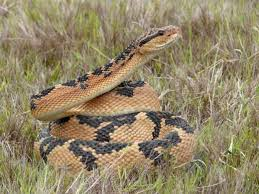 Lachesis can be characterized by being highly talkative, sad in the morning, restless and uneasy. Doesn’t want to go anywhere but to be left alone. Can be irritable and nasty with a sharp tongue. The fever has hot flushes, but the back is chilly and the feet are ice cold. Sleepy, yet can’t fall asleep, sleeps into aggravations of the symptoms. There are a lot of the same bleeding symptoms, same with vomit and stools and bruised skin. Modalities are better discharges and warmth, worse morning and evening, left side, and pressure or constriction of any kind.
Lachesis can be characterized by being highly talkative, sad in the morning, restless and uneasy. Doesn’t want to go anywhere but to be left alone. Can be irritable and nasty with a sharp tongue. The fever has hot flushes, but the back is chilly and the feet are ice cold. Sleepy, yet can’t fall asleep, sleeps into aggravations of the symptoms. There are a lot of the same bleeding symptoms, same with vomit and stools and bruised skin. Modalities are better discharges and warmth, worse morning and evening, left side, and pressure or constriction of any kind.
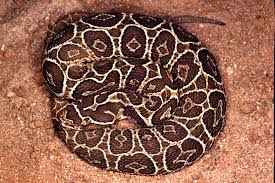 Bothrops can be distinguished by intense photophobia, day blindness or blindness when there is no pathological condition. It has the same broken-down hemorrhagic constitution and septic state with a right sided modality.
Bothrops can be distinguished by intense photophobia, day blindness or blindness when there is no pathological condition. It has the same broken-down hemorrhagic constitution and septic state with a right sided modality.
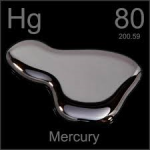 Mercurius Corrosivus can be distinguished by the intensity of tenesmus and excoriation. It also has the eye symptoms strongly as well as throat and GI tract pains and vomiting. Delirium and stupor with chilliness from the slightest exposure, profuse perspiration with skin cold. The modalities are worse in the evening and night.
Mercurius Corrosivus can be distinguished by the intensity of tenesmus and excoriation. It also has the eye symptoms strongly as well as throat and GI tract pains and vomiting. Delirium and stupor with chilliness from the slightest exposure, profuse perspiration with skin cold. The modalities are worse in the evening and night.
What about Homeopathic remedies today?
Remembering this paper I wrote in 1996, I searched the web for mentions of Homeopathy and Ebola. I thought for sure a professional organization would be mobilized for sending homeopathic treatment as they do in so many parts of the world. A lot of what I found on the internet was not flattering.
A famous quack-busting blogger tweeted something that went viral:  On their Facebook page, Homeopaths Without Borders say on July 31:
On their Facebook page, Homeopaths Without Borders say on July 31:
Our hearts go out to the people and communities in West Africa confronted with the current ebola virus outbreak. While HWB’s projects are focused in North & Central America and the Caribbean we have reached out to our counterparts working in Africa to offer our support.
I could not find who their African counterparts were as of this writing.
With all the calls for science-based medicine, the skeptics are either not aware of, or are ignoring the fact that:
Homeopathic remedies (for Ebola) are FDA Approved!
![]() Guess what. The U.S. Food and Drug Administration (FDA) now regulates at least two homeopathic remedies indicated for Ebola hemorrhagic fever: Crotalus horridus and Phosphorus.
Guess what. The U.S. Food and Drug Administration (FDA) now regulates at least two homeopathic remedies indicated for Ebola hemorrhagic fever: Crotalus horridus and Phosphorus.
 Many homeopathic remedies are in the Homeopathic Pharmacopoeia of the United States (HPUS). That happened because at one point in the history of medicine in the United States, Homeopathic Physicians were widespread and their medicine helped a lot a people.
Many homeopathic remedies are in the Homeopathic Pharmacopoeia of the United States (HPUS). That happened because at one point in the history of medicine in the United States, Homeopathic Physicians were widespread and their medicine helped a lot a people.
In fact, homeopathy has a track record of efficacy in some of the most devastating epidemics in history:
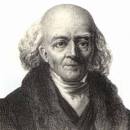 1800: Scarlet Fever epidemic: Dr. Samuel Hahnemann used Belladonna for prevention and treatment of the disease.
1800: Scarlet Fever epidemic: Dr. Samuel Hahnemann used Belladonna for prevention and treatment of the disease.
1813: European Typhus epidemic: Those treated in homeopathic hospitals had a mortality rate of less than 1% percent, while those treated with allopathic medicine had a mortality rate well over 30%.
1902: Smallpox outbreak in Iowa: Dr. Eaton reported that of 2,806 people given Variolinum as a preventative, the rate of protection was 97%, unheard of in allopathic medicine.
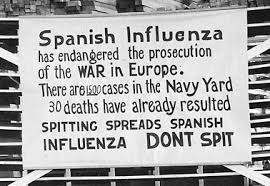 1918: Spanish Flu Pandemic: Homeopathic hospitals had a remarkably low death rate while millions died. 26,000 cases of the flu were treated homeopathically with only a 1.05% death rate, compared to a death rate of 28.2% of the 24,000 cases treated allopathically. Gelsemium was the most commonly used remedy for the H1N1 influenza virus of the Spanish Flu.
1918: Spanish Flu Pandemic: Homeopathic hospitals had a remarkably low death rate while millions died. 26,000 cases of the flu were treated homeopathically with only a 1.05% death rate, compared to a death rate of 28.2% of the 24,000 cases treated allopathically. Gelsemium was the most commonly used remedy for the H1N1 influenza virus of the Spanish Flu.
1974: Meningitis outbreak in Brazil: The British Medical Journal reported that those who were given the remedy Menigococcinum preventively were 23 times more protected from developing the disease than those who did not receive treatment.
History of Recent Hemorrhagic Fevers
 The first notice of a new hemorrhagic fever was in 1967, when 31 lab workers both in Marburg and Frankfurt Germany and Belgrade, Yugoslavia became infected, and seven died. The workers were processing kidneys from Ugandan green monkeys for cell culture production. Many of the monkeys from the shipment died of a hemorrhagic disease. A virus was isolated that was morphologically unique and unrelated in antigen to any other human pathogen, and was named Marburg virus.
The first notice of a new hemorrhagic fever was in 1967, when 31 lab workers both in Marburg and Frankfurt Germany and Belgrade, Yugoslavia became infected, and seven died. The workers were processing kidneys from Ugandan green monkeys for cell culture production. Many of the monkeys from the shipment died of a hemorrhagic disease. A virus was isolated that was morphologically unique and unrelated in antigen to any other human pathogen, and was named Marburg virus.
Nothing else was reported for eight years until a man who traveled in Zimbabwe became ill and died of hemorrhagic fever after returning home to South Africa. In 1976, epidemics of severe hemorrhagic fever occurred simultaneously in Zaire and Sudan with more than 550 infected and 430 deaths. This virus was isolated and determined to be morphologically identical to but serologically distinct from the Marburg virus and was named Ebola, after a small river in northwest Zaire.
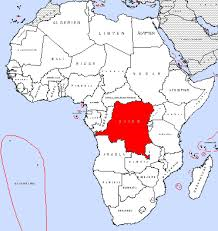 The epidemic spread person to person and ended after the institution of basic quarantine procedures. Other scattered incidents occurred through the years either from individuals in Africa who transmitted it to health care workers or from laboratory workers who had accidental exposure.
The epidemic spread person to person and ended after the institution of basic quarantine procedures. Other scattered incidents occurred through the years either from individuals in Africa who transmitted it to health care workers or from laboratory workers who had accidental exposure.
Then in May 1995, 136 cases of Ebola broke out in Zaire with 101 fatalities, three quarters of them health care workers. Again it spread until it was recognized, quarantine procedures instituted and protective equipment brought in for use.
An infected traveler incoming from Africa was stopped and quarantined in Canada, or the epidemic might have been world-wide at that time.
The first ground zero case in the current epidemic took place on December 6, 2013 in Guinea, then spreading to Sierra Leone and Liberia. The World Health Organization reported that by August 6, 2014, Ebola had infected at least 1,779 people in four West African countries and killed 962 of these. Some infected Americans came back to be treated.
However, on September 20, 2014, Thomas Eric Duncan arrived in the USA from Liberia to visit family. He died on October 8th from an Ebola infection. Subsequently, a nurse treating him, Nina Pham came down with an infection, and received a transfusion packed with Ebola antibodies from Dr. Kent Brantly, a missionary doctor who survived Ebola two months ago.
The story is still unfolding.
Characteristics of Ebola Virus
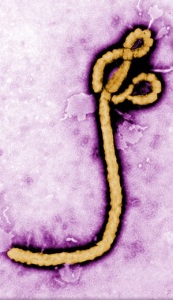 Under the microscope, Ebola looks like a snake. It is stable at room temperature and survives multiple freezing and thawing. It is destroyed by 30 minutes at 140 degrees Fahrenheit (60 degrees centigrade.)
Under the microscope, Ebola looks like a snake. It is stable at room temperature and survives multiple freezing and thawing. It is destroyed by 30 minutes at 140 degrees Fahrenheit (60 degrees centigrade.)
The incubation for Ebola virus is the extreme range of 2 to 21 days with 8 to 10 being the most common.
Russian research found that it is poorly inactivated by UV radiation, but gamma radiation destroys it.
Common disinfectants such as chloramines and formaldehyde reliably inactivate the virus as well as lipid solvents, b-propiolactone, hypochloride (bleach) and phenolic disinfectants.
Armed with this information, you may realize that the world has faced pandemics before and survived. Times are different with pervasive air travel allowing a quick international spread and lifestyle stress lowering immunity. Know that there are things you can do, you are not powerless. I am here to help.



